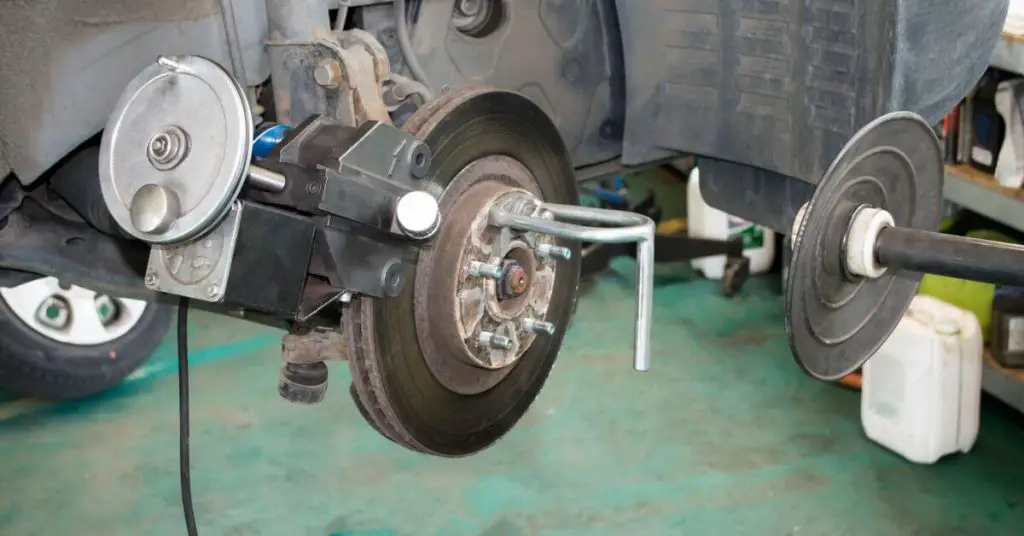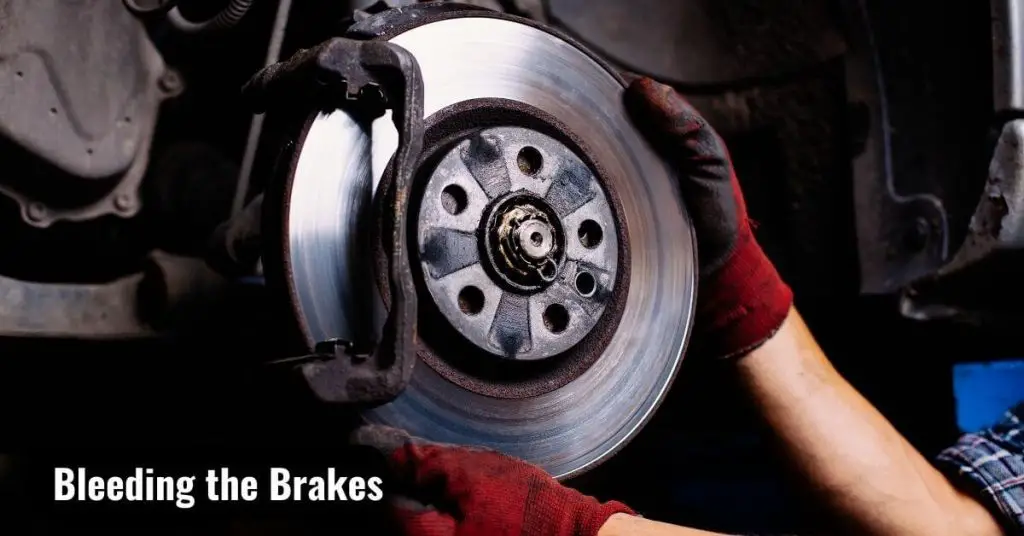Do I Need to Bleed Brakes After Changing Pads
As a car owner, you know that maintaining your vehicle’s brakes is essential for your safety and the safety of others on the road. One critical aspect of brake maintenance is changing your brake pads regularly, as worn pads can decrease your stopping power and even damage your rotors. However, if you have recently changed your brake pads, you may be wondering if bleeding the brakes is necessary.
Bleeding the brakes is the process of removing air bubbles from the brake lines, which can affect the brake pedal’s responsiveness and reduce stopping power. When you change your brake pads, you may have pushed the brake caliper pistons back into their cylinders to make room for the new, thicker pads. This action can create air bubbles in the brake lines, which can compromise your brakes’ effectiveness.
In this guide, we will provide you with all the information you need to know about bleeding the brakes after changing the pads, including why it’s necessary, how to do it, and what tools you’ll need. So, let’s get started.
Table of Contents
Preparation for Bleeding Brakes

When it comes to brake system maintenance and performance, bleeding the brakes is a crucial step that should not be skipped after replacing the brake pads. Bleeding the brakes ensures that any air pockets are eliminated from the hydraulic system, resulting in a firm brake pedal and reliable stopping power. Before diving into the process of bleeding brakes, taking some extra time to prepare and gather the necessary tools and materials is essential for a successful brake job. In the following headings, we’ll outline the steps for preparing to bleed brakes after pad replacement.
1. Gather Materials Needed
Before you begin bleeding your brakes, you need to gather the necessary materials. These materials include a brake bleeding kit, brake fluid, a wrench or socket, and a container to collect the old brake fluid. A brake bleeding kit includes a hose, valve, and reservoir that attach to the brake bleeder screw. You can purchase a brake bleeding kit from your local auto parts store or online.
2. Explain Safety Precautions
Safety is key when it comes to working on your car, so make sure you take the necessary precautions. Make sure the car is parked on a flat and level surface with the parking brake engaged. Place the jack stands under the frame of the car and ensure they are securely in place before jacking up your vehicle. Additionally, always wear eye protection and use gloves when handling brake fluid, as it can be corrosive to skin. Lastly, never try to open the brake fluid reservoir or bleed the brakes with the engine running.
3. Preparing the Vehicle for Bleeding Brakes
Once you have gathered your materials and taken the necessary safety precautions, it is time to prepare your vehicle for bleeding brakes. Follow these steps:
– Open the Master Cylinder Reservoir and Check Fluid Levels
The first step in preparing your vehicle for bleeding brakes is to open the master cylinder reservoir and check the fluid levels. The master cylinder is the heart of the brake system, and it is where the brake fluid is stored. You can find the master cylinder reservoir under the hood of your vehicle, usually near the firewall. Ensure that the fluid is at the recommended level and top it up if necessary.
– Attach a Tubing to the Bleeder Screws and Place Container Underneath
Next, attach a tubing to the bleeder screws and place a container underneath to catch the old brake fluid. The bleeder screws are located on the brake calipers or wheel cylinders, depending on the type of brake system your vehicle has. The tubing should fit snugly over the bleeder screw and extend into the container.
Why Does Air Get Into While Bleeding?
Air can get into the brake fluid for several reasons. The main reason is that the brake fluid tends to absorb moisture when exposed to the air. This can happen when you open either the brake line or the brake fluid reservoir, as these situations expose the brake fluid to air.
For example, many mechanics recommend opening up the brake fluid reservoir while changing brake pads, as it helps release pressure on them and makes them easier to remove. Additionally, once a person opens up their brake line, air can travel through that line and make its way into the master cylinder, which will mix with the existing brake fluid.
The result of this process is that it exposes your brakes to moisture and creates air bubbles in your brake fluid, which causes a decrease in the performance and reliability of your brakes. It can also lead to heat build-up in your brakes, leading to further damage if not dealt with properly.
Therefore, it’s important to regularly check your car’s brakes and ensure they are properly sealed before taking a drive if any part of the braking system has been disturbed recently to avoid putting yourself at risk while driving.
What Can the Bubbles Do?
Air bubbles in the brake fluid reservoir can cause serious safety problems while driving. It is important to check the brake fluid level and the appearance of air bubbles regularly to ensure a safe braking system.
In hot climates and during hard braking, there is an increased risk of air bubbles forming in the brake fluid due to vaporization. The vaporized air increases the volume resulting in a long distance to stop the vehicle. Moreover, when you press on the brake pedal, it may feel spongy rather than having a firm response due to the lack of a steady flow of hydraulic pressure caused by air bubbles in your brake fluid reservoir.
Furthermore, any moisture present from these air bubbles can result in corrosion or other damage to the internal components of your braking system over time. It is always recommended that you follow your vehicle manufacturer’s instructions for care and maintenance and perform timely fluid flushes and changes as per their recommended schedules.
How Can I Remove Those Air Bubbles from Bleeding the Brakes?

1. Use a brake bleeder kit
One of the most common methods to remove air bubbles from bleeding brakes is by using a brake bleeder kit. This is a tool that connects to the brake bleeder valve and forces fluid through the system, removing air and ensuring that the brake lines are completely full.
2. Gravity bleeding
Gravity bleeding is another method of removing air bubbles from the brake system. It’s a simple process where you open the bleeder valve and let gravity pull the fluid and air bubbles out of the system. This method is useful when you don’t have a brake bleeder kit available.
3. Two-person bleeding
This technique involves having one person pump the brakes while the other opens and closes the bleeder valve. The person pumping the brakes needs to apply the pedal pressure in a smooth and consistent manner to avoid introducing more air into the system.
4. Pressure bleeding
Pressure bleeding is a method that uses a specialized tool and a pressurized container to force brake fluid through the system, removing air bubbles in the process. This method is typically used by professional mechanics and can often be done quickly and efficiently.
5. Proper bleeding sequence
It’s critical to bleed the brakes in the correct order to ensure that there are no air pockets remaining in the system. Always follow the manufacturer’s recommended bleeding sequence to be sure that you’ve removed all the air.
6. Be patient
Bleeding brakes can be a slow and tedious process, especially if you’re doing it alone. Be patient and take your time to ensure that you’ve done a thorough job and haven’t missed any air bubbles. Finally, it’s a good idea to flush the entire brake system periodically to ensure that there are no contaminants or air pockets present. This will help to keep your brakes functioning properly and prevent any potential safety issues.
How Long Will It Take to Bleed?
Bleeding your car’s brakes is an important and necessary part of regular vehicle maintenance. It will ensure the brakes run smoothly and properly, ensuring you and your passengers are safe behind the wheel. On average, it should take between 30 to 40 minutes to bleed your brakes, with an approximate 10-15 minute window per wheel.
Brake bleeding should certainly not be done on your own; ideally, there should be two people to execute this task correctly. The person sitting in the driver’s seat has a very big role to play as they need to press the brake pedal for each wheel as it is being bled.
Frequently Asked Questions [FAQs]
1. Can I Bleed Brakes By Myself?
Yes, you can bleed brakes by yourself. Bleeding brakes is a relatively simple process that most people can do with the right tools and some patience. You will need a wrench or socket set, a brake bleeder kit, brake fluid, and an old rag.
2. What Is The Fastest Way To Bleed Brakes?
The fastest way to bleed brakes is to use a pressure bleeding system. This type of system requires the use of a specialized vacuum pump, which connects to the brake lines and creates a vacuum for the brake fluid to flow through. The process is relatively simple, as you only need to connect the pump, open all bleed screws, and slowly pressurize the master cylinder until all air bubbles have been removed.
3. Do I Need To Bleed The Brakes After Changing Pads?
No, you don’t necessarily need to bleed your brakes after changing the brake pads. However, it is recommended that you do. Bleeding your brakes will ensure that all air and moisture have been removed from your brake fluid, which will help keep your braking system running smoothly and safely.
4. Will Air In Brake Lines Go Away?
Air in brake lines is a common problem when changing brake pads, as air can be introduced into the system during the process. To ensure proper braking performance, it is recommended to bleed your brakes after changing pads. This process involves releasing air from the brake lines and replacing the fluid with fresh, clean fluid. The procedure will vary depending on the type of vehicle but typically involves connecting a vacuum pump or special tool to the brake lines and slowly pressing on the brake pedal.
5. Can You Bleed All 4 Brakes At Once?
Many car experts will advise you to bleed all four brakes once the brake line is opened to replace a caliper or do other maintenance work. Nevertheless, it is important to note that this is not a hard-and-fast rule, especially if the brake line you are having serviced is independent of the others.
Conclusion
It’s important to bleed your brakes after replacing the brake pads. This process removes any air trapped in the brake lines, which can compromise the performance and safety of your brakes. It’s a simple process that anyone can do with a few basic tools, and it only takes a few minutes to complete. By taking the time to bleed your brakes, you can ensure that your vehicle’s braking system is working at peak performance, which can help keep you and your passengers safe on the road. So don’t skip this crucial step and take the time to properly bleed your brakes after replacing the brake pads.
